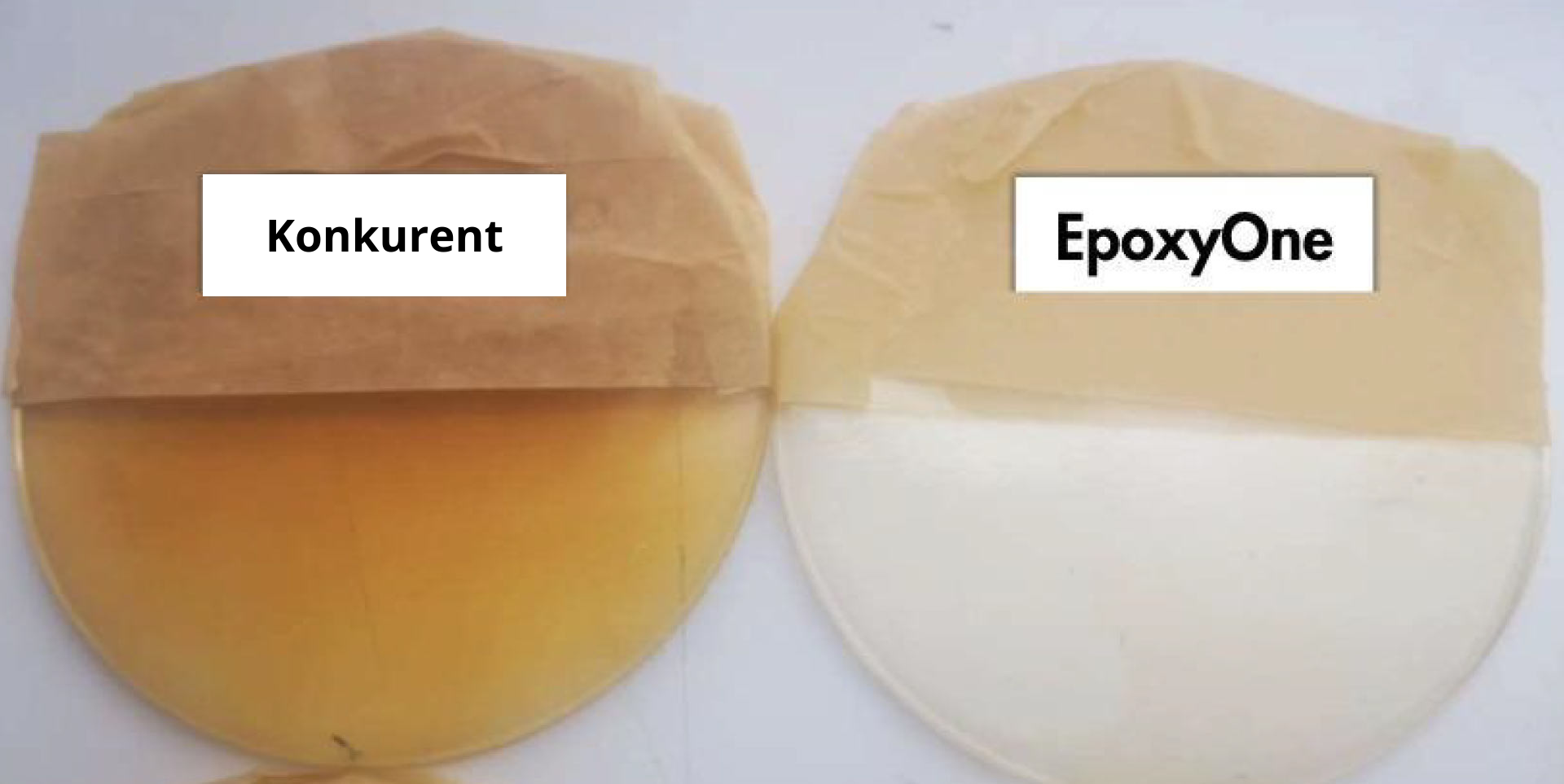
The most common cause of epoxy yellowing is UV light.
When exposed to light, the molecules of the polymers start to break down, causing the epoxy to turn yellow over time. The change actually starts as soon as the resin is exposed to light, but the yellowing only becomes visible to the eye later.
A subtle yellowing may be noticeable as early as 24 hours later, but the longer the epoxy is exposed to UV light, the darker it becomes. Another interesting fact is that the yellowing continues even when the epoxy is removed from UV light!
Poorly mixed epoxy can also turn yellow over time.
If the epoxy does not mix properly with the hardener, free molecules will remain in the hardener, preventing the epoxy from fully setting. This reduces the strength of the resin and its resistance to various external agents such as UV radiation.
Epoxy One Deep Pour epoxy resin, with the maximum amount of UV stabiliser added to ensure the highest UV protection, is available in our online shop. We had our own EpoxyOne epoxy tested and compared with other epoxy resins on sale. In addition to other tests (e.g. transparency, shrinkage on setting), a UV test was also carried out. The UV test showed how fast and how yellow the resins change over time.
Epoxy One Deep Pour
As you can see in the picture, EpoxyOne passed the UV test with flying colours.
In particular, the epoxy resins were exposed to a special, highly emitting UV lamp for 7 days. One week under the equipment is equivalent to 14 years of normal use.


